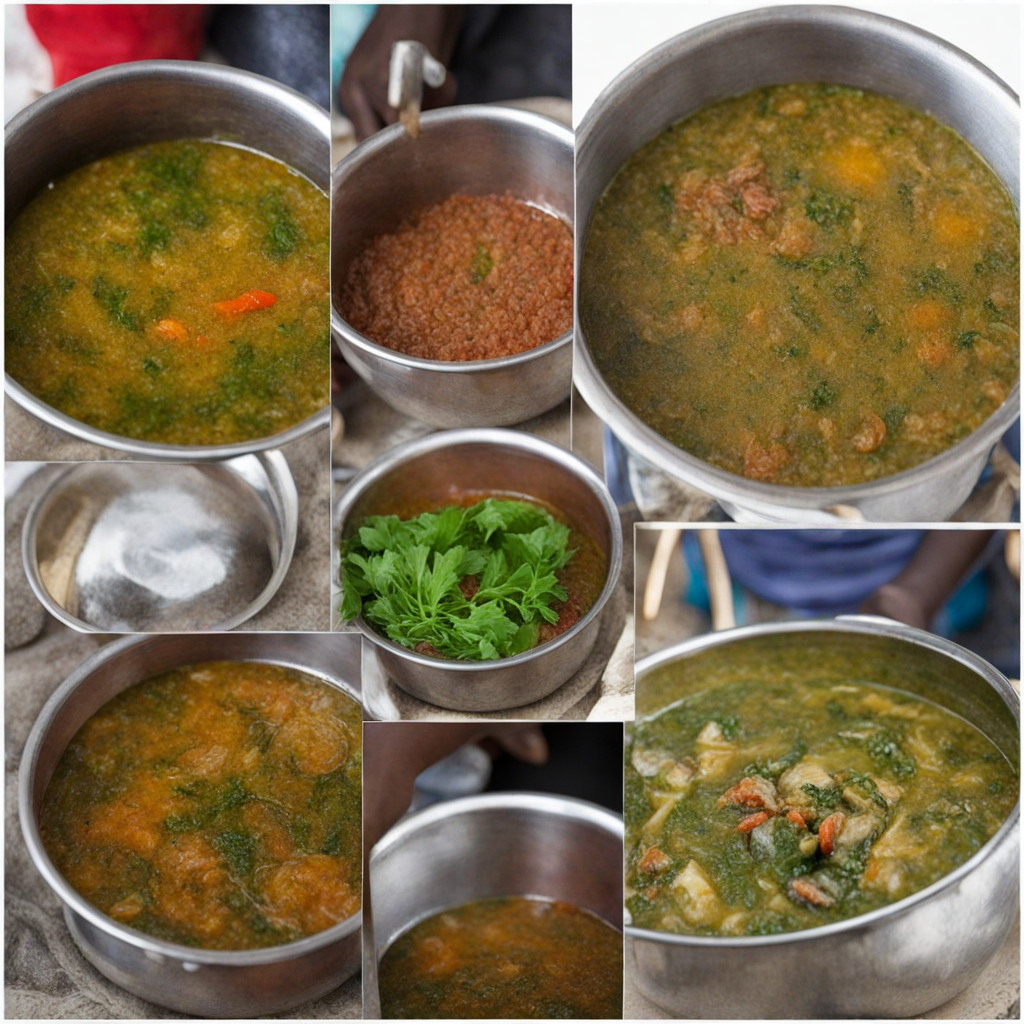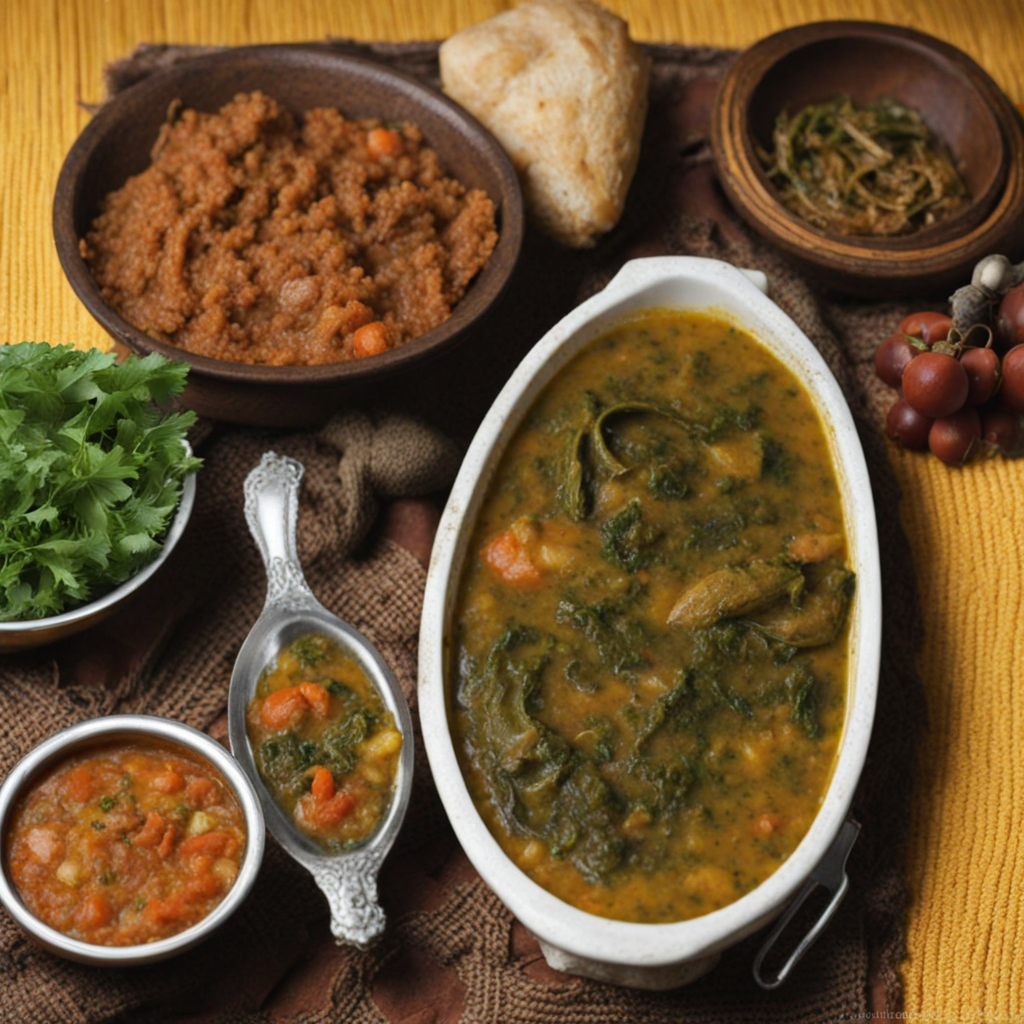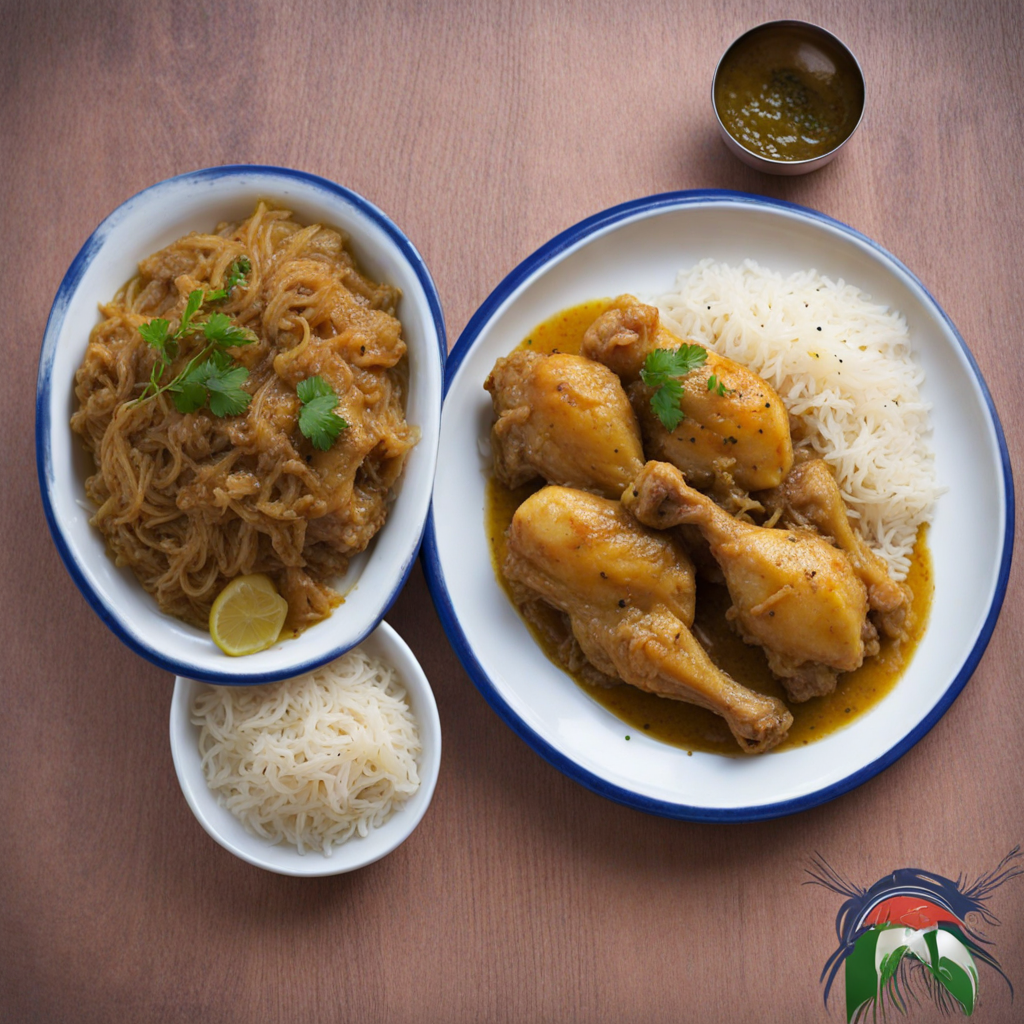Kansiye
Kansiye is a traditional dish from Guinea-Bissau that beautifully embodies the rich culinary heritage of West African cuisine. This flavorful stew is primarily made with tender pieces of meat, often chicken or goat, simmered slowly in a savory sauce infused with a medley of spices. The distinctive taste of Kansiye comes from the use of palm oil, which adds a rich, deep flavor and vibrant color to the dish. Accompanying the protein are local vegetables, such as okra and cassava, which contribute both texture and nutritional value, making each bite a delightful experience.
How It Became This Dish
The History of Kansiye: A Culinary Treasure of Guinea-Bissau Origin and Ingredients Kansiye is a traditional dish from Guinea-Bissau, a small West African nation bordered by Senegal to the north and Guinea to the south. The dish has deep roots in the country's culinary practices, drawing from the diverse influences of the various ethnic groups that inhabit the region, including the Balanta, Fula, and Mandinga peoples. The name "Kansiye" is derived from the local language, where it is often transliterated as "cansé" or "cansé d’água," meaning "watered meat." This name speaks to the dish's most defining characteristic: its rich, soupy consistency. At its core, Kansiye consists of a base of meat—commonly goat, chicken, or beef—cooked with an assortment of vegetables and spices. Key ingredients include sweet potatoes, cassava, and sometimes rice, which provide a hearty foundation. The dish is seasoned with local spices like chili peppers, garlic, and ginger, creating a flavor profile that is both robust and aromatic. Cultural Significance Kansiye holds a significant place in the culinary traditions of Guinea-Bissau, often served during important social gatherings, celebrations, and family events. It is not just a meal but a symbol of community and togetherness. Traditionally, Kansiye is prepared in large quantities, making it ideal for sharing. The act of cooking and sharing this dish fosters bonds among family and friends, reinforcing the cultural value of communal dining in West African societies. In many communities, the preparation of Kansiye is a communal affair, where women gather to cook, share stories, and pass down culinary knowledge from generation to generation. This practice reflects the broader social dynamics of Guinea-Bissau, where food serves as a means of cultural expression and identity. The preparation of Kansiye can also carry spiritual significance; certain ingredients may be selected for their supposed health benefits or symbolic meanings, connecting the act of cooking to the rich spiritual traditions of the region. Historical Development The history of Kansiye can be traced back to the pre-colonial era when the indigenous peoples of the region cultivated crops and raised livestock. The agricultural practices of these various ethnic groups were influenced by the region's geography and climate, leading to the growth of crops such as millet, sorghum, and cassava. The introduction of new ingredients and cooking techniques, especially during the colonial period, further shaped the evolution of Kansiye. During the 15th to 19th centuries, Guinea-Bissau became a crucial hub in the transatlantic slave trade. This period brought about significant cultural exchanges between the African populations and the European traders, as well as between various ethnic groups. The result was an enriching fusion of culinary practices. For instance, the introduction of spices and cooking methods from Portuguese influence can be seen in the seasoning and preparation of Kansiye. The dish evolved to reflect these new influences while retaining its core ingredients and essence. Following independence from Portuguese colonial rule in 1973, Guinea-Bissau underwent a period of political and social upheaval. The struggle for independence also led to a resurgence in the appreciation of local traditions, including cuisine. Kansiye emerged as a dish that not only represented the nation's culinary heritage but also its resilience and unity as a people. As the nation sought to define its identity post-independence, Kansiye played a role in the celebration of cultural pride and continuity. Contemporary Significance In contemporary Guinea-Bissau, Kansiye continues to be a beloved staple, enjoyed across different regions and communities. While the traditional methods of preparation remain, variations have emerged, reflecting the influence of globalization and the diaspora. Guinea-Bissauans living abroad have adapted the dish to available ingredients, ensuring that Kansiye remains a link to their homeland and cultural heritage. In urban areas, Kansiye is often served in local eateries and restaurants, where it is enjoyed not only by locals but also by tourists seeking an authentic taste of Guinea-Bissau. This exposure has helped to elevate the dish’s profile beyond its traditional confines, contributing to a growing interest in West African cuisine on the global stage. Chefs and food enthusiasts are increasingly exploring the flavors and techniques of this region, with Kansiye serving as a prime example of the richness of West African culinary traditions. Moreover, the preparation and consumption of Kansiye today embody broader themes of sustainability and food security. The reliance on locally sourced ingredients promotes agricultural practices that are both environmentally friendly and economically viable for communities. Traditional farming methods, which often include crop rotation and intercropping, help maintain biodiversity and preserve the land, ensuring that future generations can also enjoy the flavors of Kansiye. Conclusion Kansiye is more than just a dish; it is a vibrant expression of the cultural tapestry that defines Guinea-Bissau. Its historical significance, rooted in the pre-colonial era, colonial influences, and post-independence pride, reflects the dynamic nature of food as a cultural artifact. As Guinea-Bissau continues to navigate the complexities of modern life, Kansiye remains a source of comfort, nostalgia, and identity for its people. Whether served at a family gathering or enjoyed in a bustling restaurant, Kansiye encapsulates the spirit of community, resilience, and the rich heritage of West African cuisine. Through its evolution, Kansiye stands as a testament to the enduring power of food in shaping cultural identity and fostering connections across generations.
You may like
Discover local flavors from Guinea-bissau







